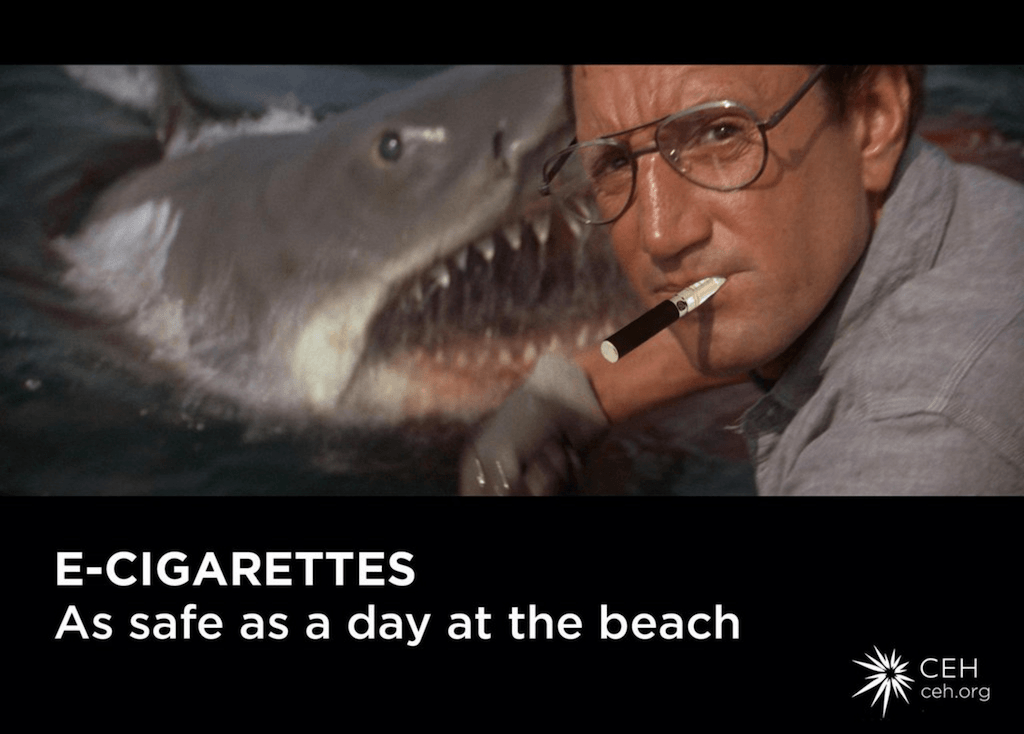
By Michael Green
How much should we trust an industry that has a decades-long history of falsifying science, misleading the public and manipulating data – all in the name of selling a deadly, addictive product? Unfortunately, recent developments suggest that, when it comes to our children’s health, some people are more trusting than they should be.
The Food and Drug Administration (FDA), following nearly a decade of calls for the regulation of e-cigarettes, announced new rules covering these nicotine-delivery devices last week. The rules were met with mixed reactions, even by those public health experts who have been urging agency action on “vaping.”
Vaughan Rees, the director of the Center for Global Tobacco Control at Harvard's T.H. Chan School of public health, called the new rules “a mixed bag,” noting that the FDA failed to curb the marketing of e-cigarettes to teens and younger children (including on television and in other venues barred for traditional cigarette advertising), allowed continued sale of candy-flavored products, and failed to address product standards.
This last failing leaves consumers especially at risk, since labels on e-cigarettes and e-liquids have often (here, here and here, among others) been found to inaccurately state the nicotine levels in products, even finding nicotine in some products marked as nicotine-free.
Rees did praise the FDA for regulating e-cigarettes as tobacco products and banning sales to minors nationwide. But in a New York Times opinion piece, Aaron E. Carroll, a professor of pediatrics at Indiana University School of Medicine, argues for some latitude in regulating teens’ use of e-cigarettes. A ban on sales to minors, he says, may backfire, just as abstinence education fails to stem teens’ risky sexual behaviors.
Nicotine is known to be harmful to women’s reproductive health, may also have effects on male fertility, and has been linked to an increased risk of cardiovascular, respiratory and gastrointestinal disorders. Studies have also found nicotine may have links to cancer.
But Professor Carroll’s suggests is that it’s better to allow kids access to an addictive, harmful drug in e-cigarettes because they might otherwise get access to the drug in the more harmful traditional varieties. E-cigarettes may not be safe, he says, but surely they’re safer than cigarettes.
E-cigarettes may be marginally safer than traditional varieties, but that’s no reason to give them a pass when it comes to our kids. A report from my organization, the Center for Environmental Health, found cancer-causing chemicals in the majority of the nearly 100 e-cigarettes we tested. In some e-cigarettes, chemicals that cause cancer were found at alarmingly high levels: One product contained formaldehyde at a level that was more than 470 times higher than the California safety standard.
Still, Professor Carroll says e-cigarettes are a useful harm-reduction strategy. Backing his case, he says, is a recent study showing that the states which ban e-cigarette sales to minors have more kids smoking cigarettes than states that don’t have such bans. Allowing kids access to e-cigarettes, presumably, is the lesser evil, since it means fewer of them are smoking cigarettes.
But this vague calculus omits the demonstrated effect of e-cigarettes as a gateway to traditional cigarettes. In fact, a 2015 study published in the journal JAMA Pediatrics found that teens who used e-cigarettes were more than three times more likely to start smoking traditional cigarettes compared to other teens. Indeed, the study likely underestimates the actual effect of e-cigarettes on teens generally, as the researchers specifically chose to follow teens who were considered "non-susceptible" to initiating traditional cigarette smoking, since they had responded "definitely no" when asked if they would try a cigarette offered by a friend or believed they would smoke a cigarette within the next year.
The industry understands the susceptibility of teens to tobacco more clearly than Professor Carroll does. That’s why they target their e-cigarette marketing to teens and even younger kids, using all of the tactics they used for decades to hook generations of young people on traditional cigarettes. Traditional cigarettes can’t be sold in candy flavors, can’t be sold using cartoon characters in ads and can’t be advertised on TV, but tobacco companies use all of these tactics and more to hook our kids on e-cigarettes.
While the FDA is making tentative steps in regulating e-cigarettes, our organization is taking on the companies directly. Our legal action has already won agreements with e-cigarette companies that prohibit them from selling candy flavors, end other marketing practices that target kids and teens, conform to labeling laws, and halt their use of unverified health claims.
As we continue to push all e-cigarette makers to meet our demands, one thing is clear: We must not allow Big Tobacco to prey on our children with their addictive, dangerous products.
Image courtesy of the Center for Environmental Health
Michael Green is Executive Director of the Center for Environmental Health.
TriplePundit has published articles from over 1000 contributors. If you'd like to be a guest author, please get in touch!














